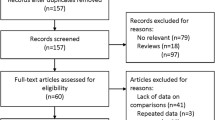Abstract
Visceral pleural invasion (VPI) is defined as penetration by cancer cells of the elastic layer of the pleura. The purpose of this retrospective study was to compare the effect of invasion of the inner elastic layer of the pleura on survival to that of invasion of the outer elastic layer. One hundred twenty-four pT1 size lung adenocarcinomas were examined for visceral pleural invasion, which was classified into three types: no pleural invasion (NPI), invasion of the inner elastic layer only (IEL), and invasion of both inner and outer elastic layers (OEL). The relationship between the types of VPI and the prognosis was analyzed by univariate and multivariate analyses. Seventy-three (59 %) cancers showed NPI, while 51 cancers showed invasion of the pleura [(IEL) in 26 (21 %), OEL in 25 (20 %)]. The 5-year survival was 81, 60, and 37 % for patients with NPI, IEL, and OEL, respectively. Survival was poorest in patients with OEL (P < 0.01). Invasion of the outer elastic layer was also significantly associated with lymph node metastasis and frequent lymphatic involvement, micropapillary pattern, higher stromal invasion grade, and presence of small cluster invasion within tumors. Univariate analysis showed a significant relationship between invasion of the outer elastic layer and poor prognosis. However, multivariate analysis identified lymph node metastasis as the most significant predictor of poor prognosis. Analysis of invasion of the inner and outer visceral pleura is important; invasion of the outer elastic layer correlates with poor prognosis in pT1 size lung adenocarcinomas.



Similar content being viewed by others
References
Brewer LA, Bai AF, Little JN, Rabago YPG (1958) Carcinoma of the lung; practical classification for early diagnosis and surgical treatment. J Am Med Assoc 166:1149–1155
Ichinose Y, Yano T, Asoh H, Yokoyama H, Yoshino I, Katsuda Y (1995) Prognostic factors obtained by a pathologic examination in completely resected non-small-cell lung cancer. An analysis in each pathologic stage. J Thorac Cardiovasc Surg 110:601–605
Manac'h D, Riquet M, Medioni J, Le Pimpec-Barthes F, Dujon A, Danel C (2001) Visceral pleura invasion by non-small cell lung cancer: an underrated bad prognostic factor. Ann Thorac Surg 71:1088–1093
Shimizu K, Yoshida J, Nagai K, Nishimura M, Yokose T, Ishii G, Nishiwaki Y (2004) Visceral pleural invasion classification in non-small cell lung cancer: a proposal on the basis of outcome assessment. J Thorac Cardiovasc Surg 127:1574–1578
Butnor KJ, Cooper K (2005) Visceral pleural invasion in lung cancer: recognizing histologic parameters that impact staging and prognosis. Adv Anat Pathol 12:1–6
Travis WD, Brambilla E, Rami-Porta R, Vallieres E, Tsuboi M, Rusch V, Goldstraw P (2008) Visceral pleural invasion: pathologic criteria and use of elastic stains: proposal for the 7th edition of the TNM classification for lung cancer. J Thorac Oncol 3:1384–1390
Butnor KJ, Vollmer RT, Blaszyk H, Glatz K (2007) Interobserver agreement on what constitutes visceral pleural invasion by non-small cell lung carcinoma: an internet-based assessment of international current practices. Am J Clin Pathol 128:638–647
Warth A, Muley T, Herpel E, Pfannschmidt J, Hoffmann H, Dienemann H, Schirmacher P, Schnabel PA (2010) A histochemical approach to the diagnosis of visceral pleural infiltration by non-small cell lung cancer. Pathol Oncol Res 16:119–123
Travis WD et al (2011) International Association for the Study of Lung Cancer/American Thoracic Society/European Respiratory Society: international multidisciplinary classification of lung adenocarcinoma: executive summary. Proc Am Thorac Soc 8:381–385
Kawakami T, Nabeshima K, Hamasaki M, Iwasaki A, Shirakusa T, Iwasaki H (2009) Small cluster invasion: a possible link between micropapillary pattern and lymph node metastasis in pT1 lung adenocarcinomas. Virchows Arch 454:61–70
Kawakami T, Nabeshima K, Makimoto Y, Hamasaki M, Iwasaki A, Shirakusa T, Iwasaki H (2007) Micropapillary pattern and grade of stromal invasion in pT1 adenocarcinoma of the lung: usefulness as prognostic factors. Mod Pathol 20:514–521
Osaki T, Nagashima A, Yoshimatsu T, Yamada S, Yasumoto K (2004) Visceral pleural involvement in nonsmall cell lung cancer: prognostic significance. Ann Thorac Surg 77:1769–1773, discussion 1773
Hiroshima K et al (2009) Malignant pleural mesothelioma: clinicopathology of 16 extrapleural pneumonectomy patients with special reference to early stage features. Pathol Int 59:537–545
Gallagher B, Urbanski SJ (1990) The significance of pleural elastica invasion by lung carcinomas. Hum Pathol 21:512–517
Hung JJ, Wang CY, Huang MH, Huang BS, Hsu WH, Wu YC (2007) Prognostic factors in resected stage I non-small cell lung cancer with a diameter of 3cm or less: visceral pleural invasion did not influence overall and disease-free survival. J Thorac Cardiovasc Surg 134:638–643
Shimizu K, Yoshida J, Nagai K, Nishimura M, Ishii G, Morishita Y, Nishiwaki Y (2005) Visceral pleural invasion is an invasive and aggressive indicator of non-small cell lung cancer. J Thorac Cardiovasc Surg 130:160–165
Takizawa T, Terashima M, Koike T, Watanabe T, Kurita Y, Yokoyama A, Honma K (1998) Lymph node metastasis in small peripheral adenocarcinoma of the lung. J Thorac Cardiovasc Surg 116:276–280
Kang JH, Kim KD, Chung KY (2003) Prognostic value of visceral pleura invasion in non-small cell lung cancer. Eur J Cardiothorac Surg 23:865–869
Harada M, Hato T, Horio H (2011) Intratumoral lymphatic vessel involvement is an invasive indicator of completely resected pathologic stage I non-small cell lung cancer. J Thorac Oncol. 6:48-54
Acknowledgments
We thank Ms. M. Onitsuka for the excellent technical assistance in immunohistochemical staining. This work was supported in part by a grant from the Research Center for Advanced Molecular Medicine, Fukuoka University.
Conflict of interest
The authors declare no conflict of interest.
Author information
Authors and Affiliations
Corresponding author
Rights and permissions
About this article
Cite this article
Hamasaki, M., Kato, F., Koga, K. et al. Invasion of the inner and outer layers of the visceral pleura in pT1 size lung adenocarcinoma measuring ≤3 cm: correlation with malignant aggressiveness and prognosis. Virchows Arch 461, 513–519 (2012). https://doi.org/10.1007/s00428-012-1317-9
Received:
Revised:
Accepted:
Published:
Issue Date:
DOI: https://doi.org/10.1007/s00428-012-1317-9




